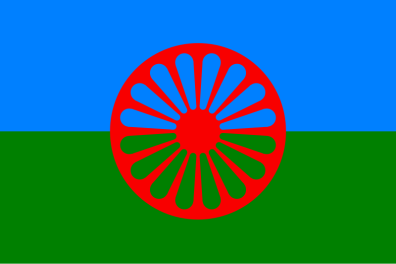Rromani
South Asia and the Himalayas: 9 countries, over 1.6 billion inhabitants and over 1,000 languages. You can learn 10 of them at Inalco, including Rromani - the only language no longer spoken in India but in the historical diaspora of Europe and the 2 Americas.

Training courses
Rromani courses can be taken as an option in UE3 and 4 of all our bachelor's degrees, in the Medieval European Civilization diploma, as well as in Passport and minor
.
RROMANI - Plaquette synthétique 2022-2023 (258.46 KB, .pdf)
Find out more
The little-known history of the rroms
The little-known history of the rroms
Roma have been the subject of a negative political and media campaign in recent years, the violence of which can sometimes be surprising. As is often the case, ignorance and prejudice are at the root of rejection and racism. So what is the background of this people and why are they treated in this way?
The exodus from India to Europe
The Rroms are - according to the research of M. Marcel Courthiade (lecturer in Rromani language and civilization at Inalco) - originated in the city of Kannauj, the cultural and spiritual capital of northern India in the 10th century. The Afghan sultan Mahmud of Ghazni, who wanted to make his city a capital of universal influence, plundered many of India's cities. In 1018, he deported 53,000 people from the town of Kannauj, mainly notables, artists and craftsmen: these would be the ancestors of the Roma. They crossed the whole of Eurasia before arriving in Anatolia and taking part in the Battle of Manzikert/Malazgirt in 1071, which marked the victory of the "Saracens" (including many Indians) over Byzantium. Read more on Langues O' magazine no 1.
Rromani dialects
Rromani dialects
This language is divided into two "super-dialects" (referred to as "O" and "E" respectively) within which 4 strata can be distinguished: 1 (with the Balkan, Carpathian and Balto-Russian sub-groups), 1' 2 and 3, which are in turn subdivided into various parlers.
From the first stratum (12th to 14th centuries) the "Atlantic branch" emerged - today reduced to a few dozen words used by Gypsies (kaló [s]), but also by Gypsies (paggerdi). This same stratum 1 later saw the emergence of the Sinti languages, which are a little closer to common Rromani, but very strongly Germanized (like Manouche) or italized.
Furthermore, a phenomenon of phonetic mutation formed stratum 1' from stratum 1, and stratum 3 from stratum 2 languages. The best-known of the stratum 3 languages is Kelderas or Kelderar, characterized, in addition to its phonetics, by a vocabulary mostly borrowed from Romanian, but also often from Russian, and Lovari.
The various Rromani languages are spoken by 6 to 8 million people (95% of the Rromani population, according to the European Union's Mercator network).